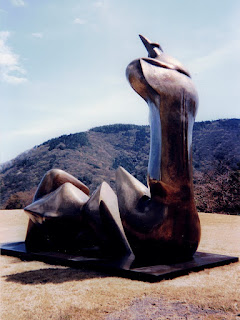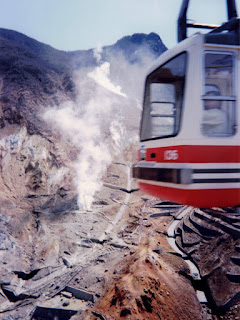The Hakone Circuit is a classic day trip. It’s normally taken from Tokyo and gives you a taste of Mount Fuji, Japan’s geothermal landscape and the scenic Japanese Alps. However, with a little planning, I realised it was also possible to complete the circuit from Osaka in a single day. It was ultimately the longest journey I took from Osaka, right at the extreme of what was realistically possible to explore in a day.
Visitors to the region buy what is called a Hakone Free Pass. This ticket gives you access to five different means of transport (train, cable car, ropeway, boat and bus). Collectively these form a scenic circuit that starts and ends at Odawara, a station on the high-speed Shinkansen line between Osaka and Tokyo.
Much of the circuit involves open-air activities. As a result, I monitored the daily forecast to ensure my excursion coincided with the best possible weather. I ultimately date-shifted my scheduled visit to make the most of the sunny weather later in the week. This proved a sage move as the day dawned bright and sunny.
Currently, eleven Henry Moore sculptures are displayed on the grounds of the Hakone Open-Air Museum. Their evocative curving forms are scattered across a sloping lawn and shaded glade, framed by distant tree-clad hills. Above is an example of one work self-evidently titled "Two Piece Reclining Figure: Cut".
Visitors then transfer to a funicular cable car, before taking an ariel ropeway down to the eastern shore of Lake Ashinoko. At one point the ropeway passes over a steaming geothermal field while providing distant views of Mount Fuji rising over the lake’s northern end. However, much to my disappointment, the mountain was hidden in a cloudy haze during my visit.
The ropeway includes a transfer station where you can disembark to explore the thermal activity. I duly got off and spent half an hour wandering through the steaming hillside. As a Kiwi, I’d have to say I’ve seen better geothermal sights in Rotorua.
In hindsight, this diversion through the Owakudani steam fields highlights how much my travel habits have changed. Decades ago I'd map out an itinerary that took in the maximum number of tourist sights available in any location. It was often a list-ticking exercise that meant I'd carve out time to see things that weren't world-class or even all that captivating.
Upon reaching the shores of Lake Ashinoko, intrepid tourists then transfer onto a replica wooden sailing ship decked out in traditional pirate garb. It was a classic Japanese kitsch. As we sailed down the lake, the weather finally played its part. Much to my delight, the clouds and poor visibility briefly lifted, giving me my first-ever hazy glimpse of Mount Fuji.
I completed the Hakone Circuit by disembarking from the faux Spanish Galleon in Moto-Hakone and catching a bus back to the railway station. The entire circuit took almost seven hours to complete. The Shinkansen took about 3.5 hours each way. Hence, with an early morning start, my day trip became a 15-hour excursion once I was done.














No comments:
Post a Comment